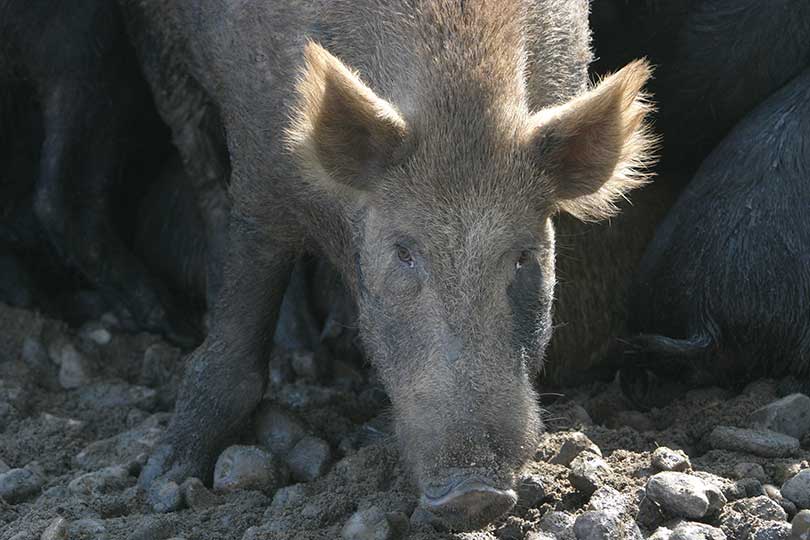By Gary Joiner
Editor
The reality of wild pigs in Texas is rooted in their remarkable numbers.
If unchecked, the wild pig population in Texas can grow at a rate of approximately 20 percent annually. About half of the U.S. wild pig population lives in our state. Sixty-six percent of the pigs must be killed each year just to maintain current population levels.
This is the time of year when Texas landowners see more wild pigs. Abundant food sources and the peak of farrowing season produce more animals across the landscape. That, unfortunately, means more damage to pastures and crops for farmers and ranchers.
Officials encourage landowners to monitor for signs of wild pig activity, such as tracks, rubs against fence posts and trees, well-used trails and hair stuck on barbed wire fences where they cross.
Dr. Billy Higginbotham, wildlife specialist with the Texas A&M AgriLife Extension Service in Overton, said there are four legal ways to address wild pigs in Texas—trapping, snaring, shooting and catch dogs.
A potential new tool, a toxicant, could be available to Texas landowners in less than three years.
“There’s some excellent research being done on the use of a toxicant, sodium nitrite. That product is already legal in the country of Australia, and the U.S. Environmental Protection Agency is requiring tests on toxicology be run on that product,” Higginbotham told the Texas Farm Bureau (TFB) Radio Network. “We expect to have that toxicant in the hands of landowners as an additional tool, hopefully no later than 2019.”
Hiring professional shooters to reduce wild pig numbers from helicopters represents a cost-effective way right now for farmers and ranchers in parts of the state with less tree canopy, but in East Texas, trapping is advised, Higginbotham said. Corral-type traps work best, especially when a landowner can catch an entire sounder of pigs, he said.
But Higginbotham said it takes a process to trap effectively. Pigs must be “hooked” on the bait before placement of the trap, he said. The trap should then be baited to allow the pigs to get comfortable.
A recent AgriLife Extension survey indicated 71 percent of landowners with pastureland reported damages by wild pigs.
It’s an issue Todd and Lindsay Kimbrell, who grow wheat and corn in Hill and Ellis counties, are all too familiar with. They had to replant about 150 acres just from pig damage this year.
“Right after it finally dried out and we could plant—later than scheduled—we got a few fields planted and at night the hogs just went up the rows and got the seed out of the ground,” Lindsay said. “We didn’t have the helicopter checking the fields this fall and winter and really paid for it.”
It’s time-consuming and costly to replant.
But the damage doesn’t always stop there. Last year, the wild pigs damaged the corn during harvest.
“We hope when there’s corn on the stalks, they have already moved on somewhere else because we had damage last year in corn while we were harvesting,” Lindsay said. “They knock down the stalk and eat the corn right off the cob.”
And the pigs don’t always eat it all, leaving a mess in one part of the field before moving on to the next stalk.
The average life expectancy in a wild pig population, under good conditions, is about four to five years. But they may live up to eight years, according to the Texas Parks and Wildlife Department. Leaving Texas farmers and ranchers with a growing problem.

